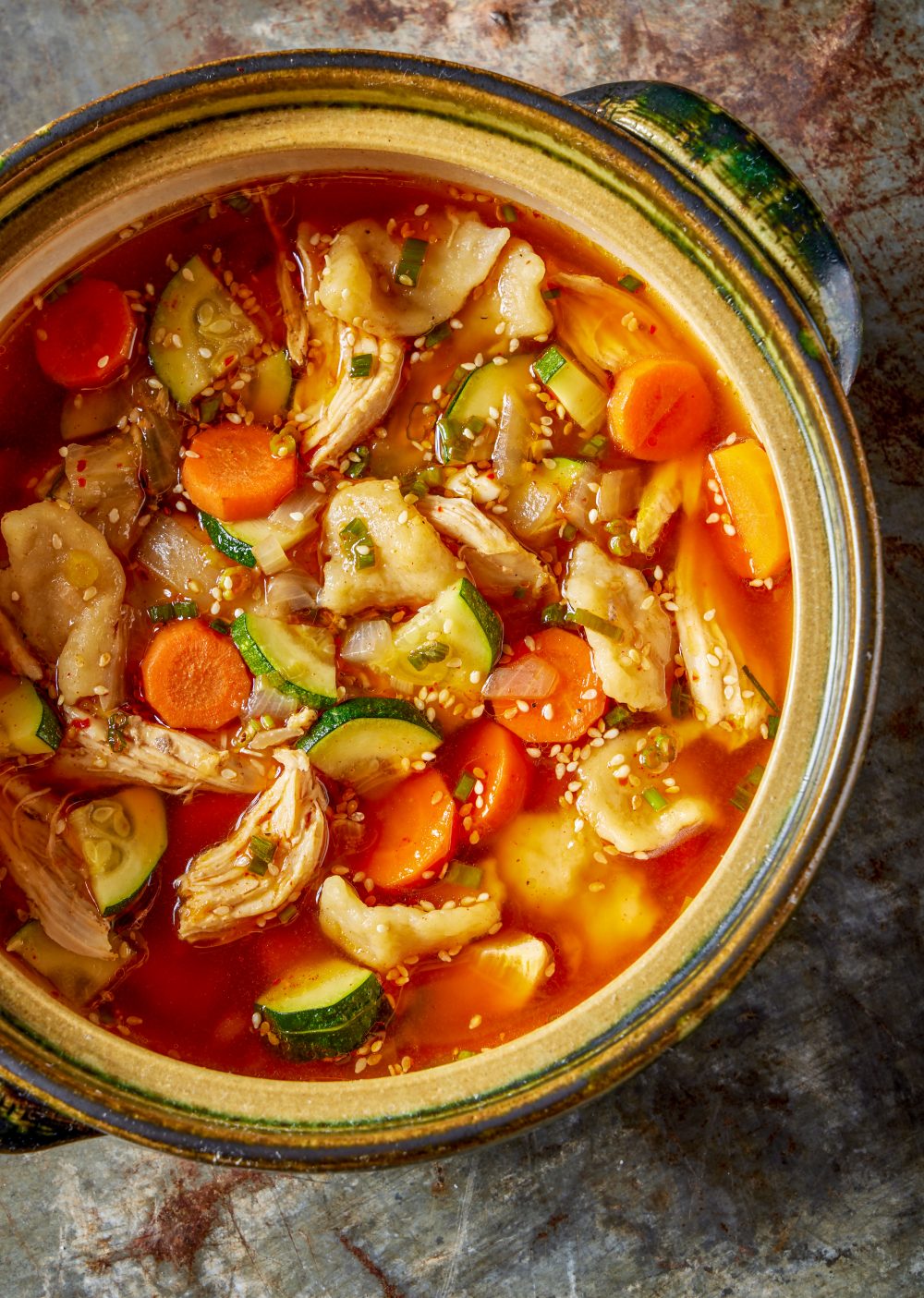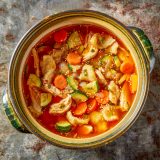One of the many pleasures of eating your way around the world is finding what I consider culinary constants. Those things that, no matter how varied our beliefs and histories and cultures, somehow always show up on our plates. Flatbreads, for example. American Johnny cakes. Mexican tortillas. Ethiopian injera. Taiwanese scallion pancakes. Pakistani naan. Almost every cuisine has some form of flatbread.
Noodles are another. Pickles, too. But probably my favorite is chicken soup. Almost everywhere, there is a long history of turning the bones and tough bits, plus ample water, some herbs, sometimes noodles or other starch, maybe some spare produce, into something we almost universally consider comfort.
South Korea is no exception. “I’ve eaten it my whole life,” Insook Park told me as she brought a pot of water to a simmer in the courtyard—a surround of lattice screens and sliding glass walls—of her home in hilly Bukchon Hanok Village, Seoul’s best-preserved traditional neighborhood. “I especially like to eat it when it’s raining. It is Korean soul food.”

She was talking about sujebi, a rustic chicken and vegetable soup with hand-torn noodles that cook up almost dumpling tender and plump. All of which makes her sentiments easy to share. Even more so as her elderly mother—the family’s third generation to live here—trundled out to help (and sometimes scold, because mothers and daughters are universal, too).
The soup itself is deliciously simple. Park enriched the water with chicken, of course, but also dried fish, giving it rich umami notes. Since that’s less common in American kitchens, we left that out of our version. Luckily, Korean soups already are so jammed with high-impact ingredients, we never missed it. Think gochujang (Korean fermented chili paste), toasted sesame oil, garlic, soy sauce and gochugaru, Korea’s version of red pepper flakes (but fruitier and—sometimes—with less heat).
The vegetables were simple—carrots, onion, zucchini and ample scallions. The blend created a nice spectrum of sweet-grassy flavors and tender-crisp textures. But the star of the dish clearly is the noodles.
Park and her mother made the dough—flour, salt and water—by hand, kneading it on a wooden board. This soup became popular during the Korean War, when rice was in short supply, but wheat flour from America was plentiful.
When the soup was nearly ready, it was time to add the noodles. Each of the women grabbed a fistful of the smooth, taut dough and quickly tore off small chunks, flattening them between their thumbs and forefingers as they went, dropping them into the simmering broth while lightheartedly bickering over who did it better.
In just minutes the noodles—rough and irregular in all the right ways—floated to the top. They were tender, with just the right chew. So much better than the mushy noodles I associate with chicken soup.
The final flourish was a mix of gochugaru, sesame seeds, finely chopped scallions and soy sauce. Park waited to add it until her mother left to prepare tea.
“I need to do it while my mother is out of the room,” she whispered. “She doesn’t do it right!”
Because some things really are universal.








